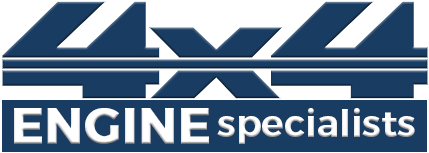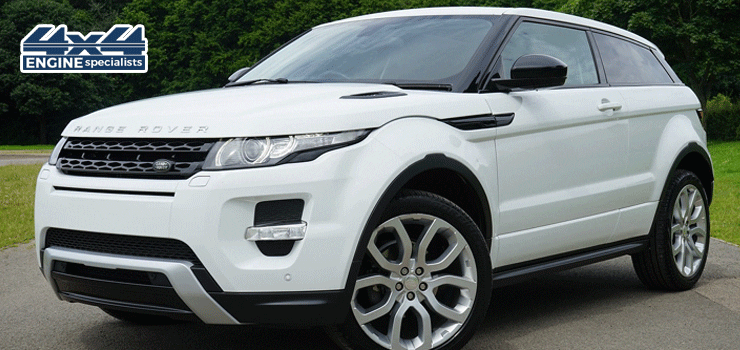The Range Rover 3.0 is an engine widely lauded for its outstanding performance and innovative design. These day’s market has seen the luxury SUV gaining much market share; however, after some time, even such high-performance engines experience certain issues. Correct troubleshooting helps minor problems not develop into a costly repair. These are especially important for users of reconditioned engines, which, although reliable, can have characteristics that differ from the new. We delves into some common problems associated with the Range Rover engines 3.0 and offers practical troubleshooting tips to keep the vehicle running at its best.
Identifying Common Oil Leaks in the Range Rover 3.0 Engine
Oil leaks are a frequent issue in Range Rover engines, particularly in older or reconditioned engines. Common causes include degraded gaskets, damaged seals, or loose drain plugs. Symptoms may include visible oil puddles under the vehicle or a burning oil smell.
First, check the oil pan, valve cover gasket, and oil filter housing for leaks. Use a flashlight to spot any wet or oily areas. Tighten loose components and replace any worn gaskets or seals. Regular oil changes and using the manufacturer-recommended oil grade can also prevent future leaks. For persistent issues, a professional diagnostic scan is advisable, especially for reconditioned engines where previous repairs might influence performance.
Overheating Diagnosis in Range Rover 3.0
Overheating can cause severe engine damage. Common reasons for overheating in the Range Rover 3.0 are coolant leaks, a faulty thermostat, or failure of the water pump. Inspect the coolant level and look for visible leaks from hoses and at the radiator. Test the thermostat by feeling the upper radiator hose; it should warm up slowly. A cold hose could indicate a stuck thermostat. Check the water pump for wear, including leaks or unusual noises. In rebuilt engines, the cooling system parts should have been inspected as part of the rebuild. Regularly flushing the cooling system and keeping coolant at the recommended level will eliminate overheating once and for all.
Fuel System Malfunctions in the Range Rover 3.0 Engine
Poor engine performance or stall is caused by a malfunctioning fuel system, among other reasons. It may involve clogged fuel injectors, the fuel pump starting to fail, or contaminated fuel. Troubleshooting involves observing for signs of clogging through uneven engine performance or misfire. Minor clogs can be solved by adding a fuel injector cleaner. Another step is testing the fuel pump pressure with the use of a gauge to meet manufacturer specifications. Replacement of the fuel filter is an imperative so that no debris reaches the engine. Reconditioned engines require recheck on fuel systems to confirm the calibration upon reinstallation. Sufficient-quality fuel should always be used in maintaining the system.
Clearing Noises from Timing Chain in the Range Rover 3.0 Engine
A noisy timing chain is another common problem that is seen often in high-mileage Range Rover engines. The causes can range from failure of the chain tensioner to worn-out chain guides.
Begin by listening for rattling noises during engine startup, especially when the engine is cold. Inspect the timing chain and its components for wear. Replace the chain, tensioners, and guides if necessary. For reconditioned engines, ensure that the timing chain assembly was replaced or inspected during reconditioning. Regular oil changes using the recommended oil grade help maintain the timing chain’s longevity and reduce noise.
How to Troubleshoot Electrical System Malfunctions of the Range Rover 3.0 Engine
Range Rovers mainly employ electronic systems that fail or become faulty at times. These include malfunctioning sensors, faulty wiring, or even software errors. The OBD-II scanner is used to scan for any error codes related to the engine. Visible damage or loose connections in the wiring harnesses are inspected. Sensors like the crankshaft position sensor and oxygen sensors are checked for proper functionality. Software updates may be needed if the problems persist. The ECU, or Engine Control Unit, in a reconditioned engine must be compatible and properly programmed. Regular diagnostic checks ensure that electrical issues are detected early and resolved quickly.
Turbocharger faults in the 3.0 Range Rover engine
The turbocharger improves engine performance but often malfunctions through low boost pressure or excessive smoke from the exhaust. Causes can be oil contamination, worn bearings, or broken turbo fins.
Inspect the turbocharger for oil leaks and excessive play in the shaft. Check the intercooler and related hoses for blockages or leaks. Clean or replace the air filter regularly to prevent debris from damaging the turbo. Reconditioned engines may have replaced or refurbished turbochargers; ensure these components meet OEM standards. Timely oil changes and using high-quality engine oil can prolong turbocharger life.
Diagnosis of Exhaust System Problems in Range Rover 3.0
Exhaust system problems, for instance, high emissions or unusual noises can affect an engine’s performance. The more common causes are likely to be a failing catalytic converter, exhaust leaks, or mufflers that have been damaged. Check the exhaust system for any visible damage, rust, or leaks. Listen for unusual noises, especially during acceleration. Use an emissions tester to determine if the catalytic converter is working correctly. For reconditioned engines, ensure that the exhaust system complies with emission standards and vehicle specifications. Regular maintenance and prompt repairs can prevent long-term exhaust system damage.
Low Oil Pressure in the Range Rover 3.0 Engine
Low oil pressure can cause severe damage if not addressed promptly. Common causes include a failing oil pump, clogged oil passages, or insufficient oil levels. Keep track of the oil pressure gauge for irregular readings. Examine the oil pump and all its associated parts for wear. Flush the engine to remove sludge that might be clogging oil passages. Refill with the type and amount of oil recommended. On reconditioned engines, make sure the oil pump was checked or replaced as part of the rebuild. Routine oil changes and checking oil levels can prevent pressure-related issues.


